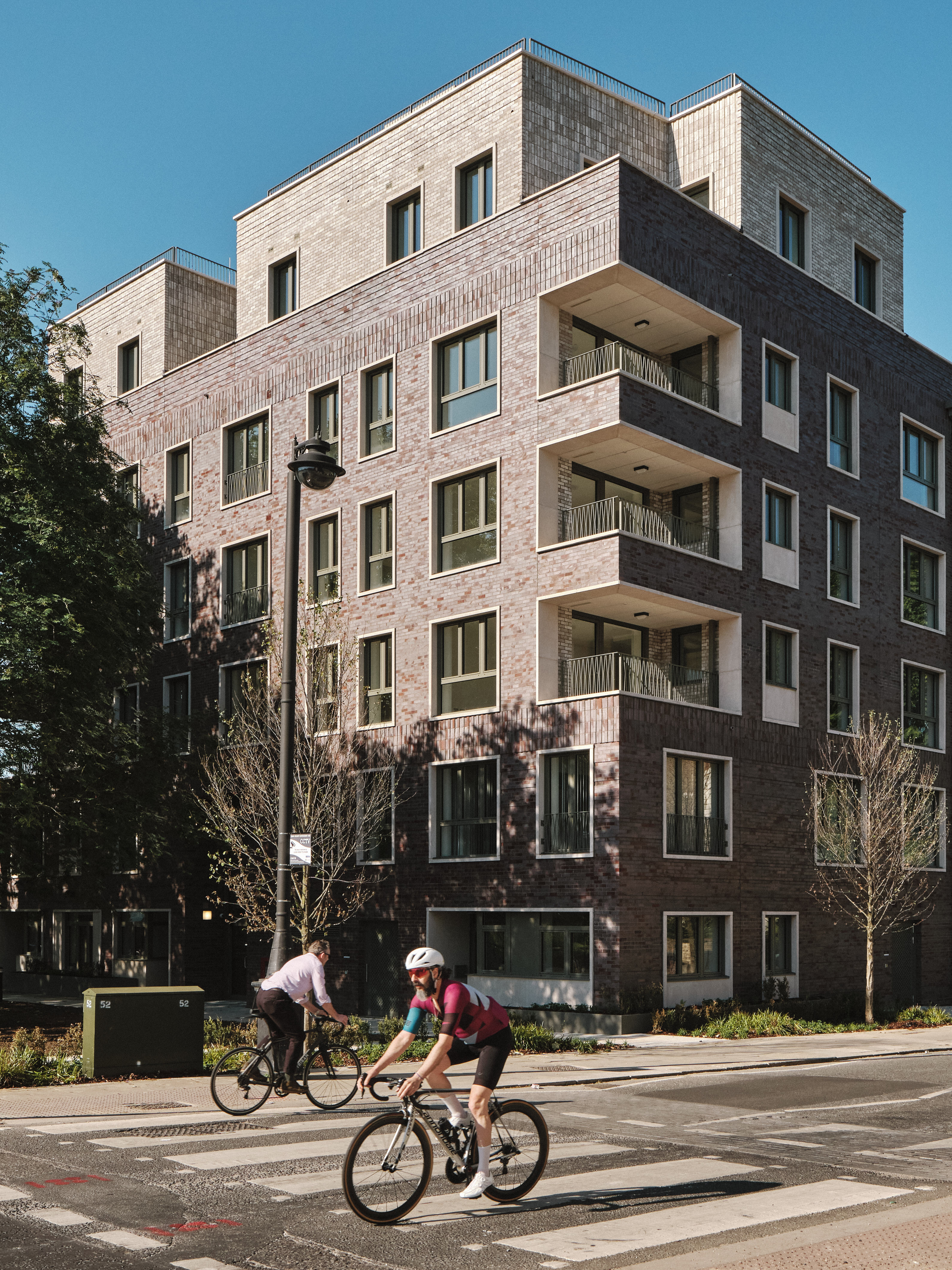
Delivered through the Community Investment Programme, Agar Grove Phase 1C replaces outdated housing with contemporary, low-energy, and socially attuned homes, demonstrating exemplary public-sector leadership in sustainable urban renewal.
Positioned as the UK’s largest certified Passivhaus-led estate regeneration, Agar Grove Phase 1C/Eeko integrates sustainability, innovation, and social impact from the outset. Energy performance is the central driver, with all new homes rigorously designed, built, and certified to the Passivhaus standard. This fabric-first strategy combines high-performance insulation, airtight construction, minimal thermal bridging, and triple glazing with mechanical ventilation and heat recovery (MVHR) to maintain stable internal comfort and drastically cut demand for heating and cooling. Communal air source heat pumps, rooftop solar generation, and living roofs further lower operational demand while strengthening climate resilience. This approach directly addresses fuel poverty for residents while curbing operational carbon emissions.
The scheme's refined architectural language, featuring detailed brickwork and GRC elements, sits comfortably within its demanding urban context. Interiors are light, calm, and generous, with efficient layouts, excellent acoustic comfort, and energy-saving appliances that reduce running costs. The project ensures consistent quality across all tenures, providing a dignified, future-ready living environment.
Urban design prioritises active frontages and enhances street connections. Every home has private outdoor space, complemented by communal gardens, shared growing areas, play spaces, and green buffers.
Significantly increased tree cover boosts biodiversity, promotes urban cooling, and fosters social interaction. A car-free policy and secure cycle storage further promote low-carbon travel. Extensive community engagement shaped the proposals, with residents successfully rehoused on site to maintain vital community networks and minimise disruption.
The judges consistently commended the exemplary delivery at scale, underpinned by clear client leadership and a willingness to pioneer new approaches. They highlighted the meticulous detailing, high build quality, and an architectural language that meets technical ambition without compromise. The project was praised as a strong, area-improving scheme with exemplary local authority commissioning and confident urban design.
The consensus positioned the project as a benchmark for sustainable, socially attuned housing that prioritises long-term comfort, performance, and affordability.
“Thoughtfully designed, energy-efficient scheme that successfully applies Passivhaus principles within an attractive architectural language.”
“A strong example of truly sustainable urban homes, both technically and aesthetically resolved.”
